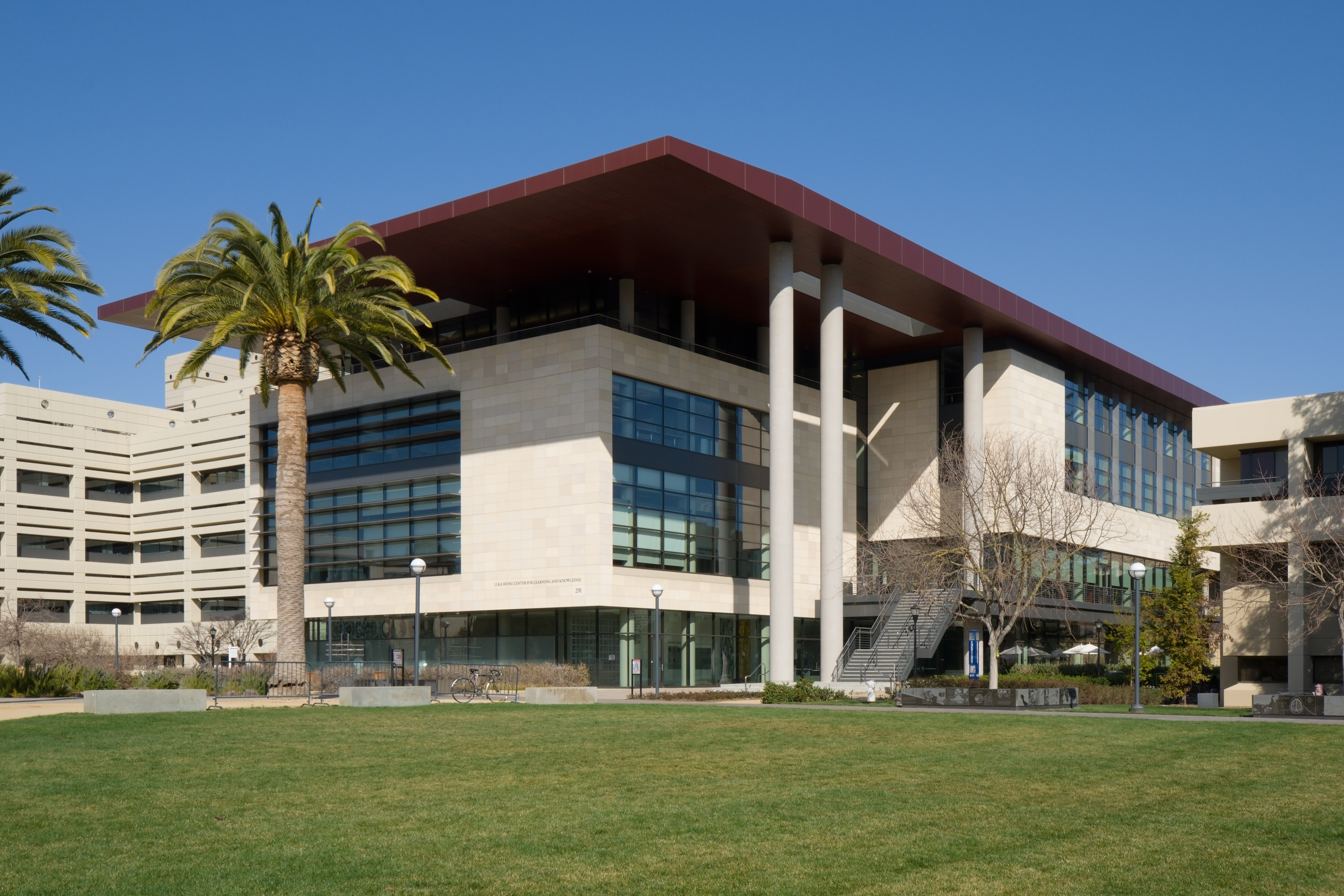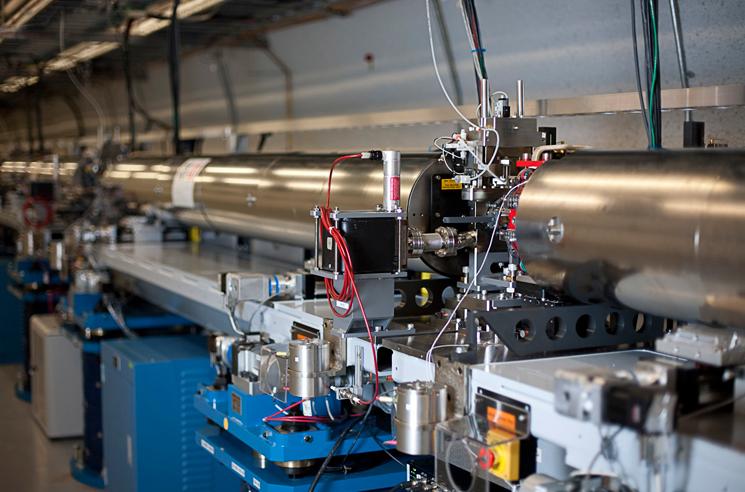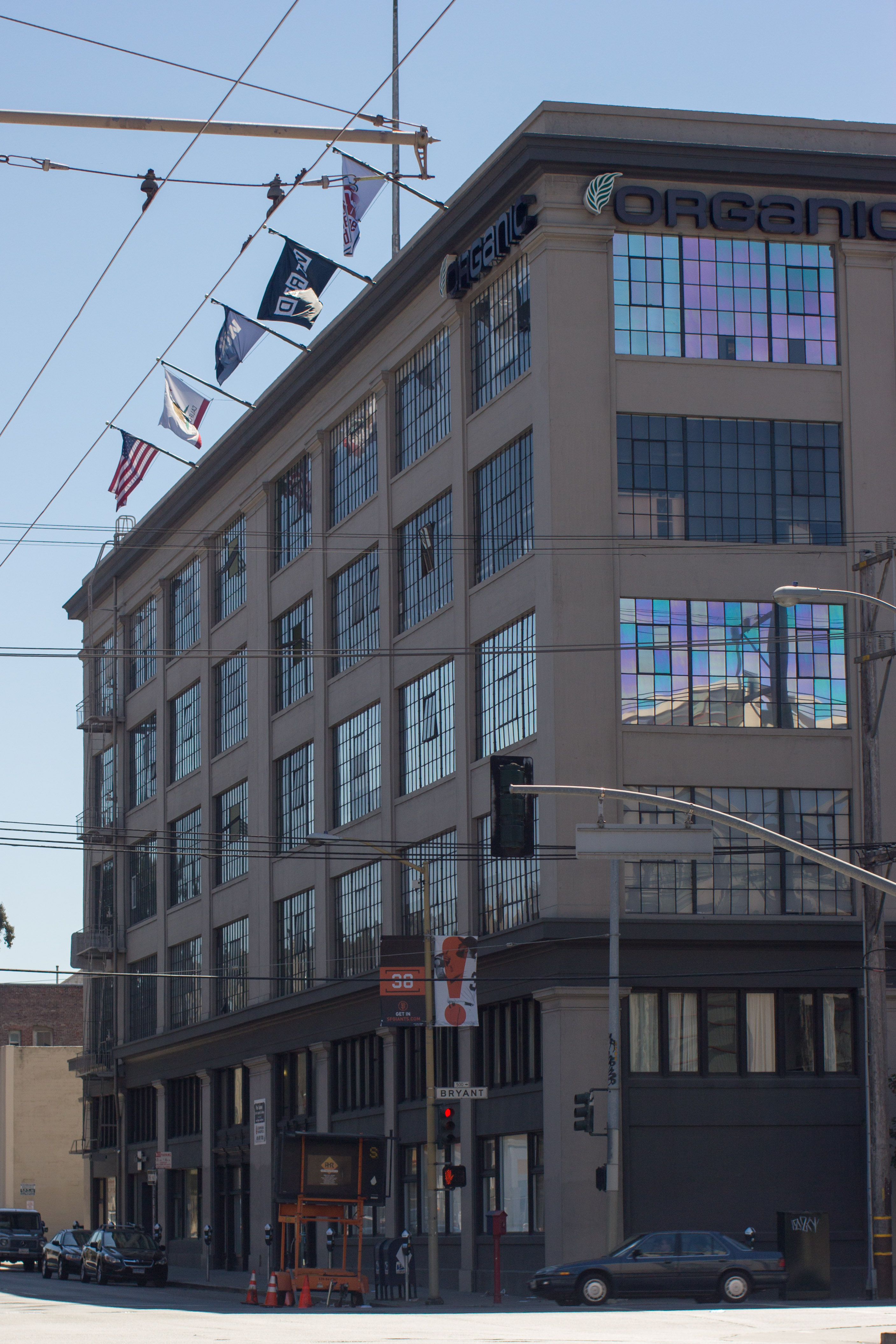|
Homebrew Computer Club
The Homebrew Computer Club was an early computer hobbyist group in Menlo Park, California, which met from March 1975 to December 1986. The club had an influential role in the development of the microcomputer revolution and the rise of that aspect of the Silicon Valley information technology industrial complex. Several high-profile hacker culture, hackers and computer entrepreneurs emerged from its ranks, including Steve Jobs and Steve Wozniak, the founders of Apple Computer. With its newsletter and monthly meetings promoting an open exchange of ideas, the club has been described as "the crucible for an entire industry" as it pertains to Personal computer, personal computing. History The Homebrew Computer Club was an informal group of Electronics, electronic enthusiasts and technically minded hobbyists who gathered to trade parts, Electronic circuit, circuits, and information pertaining to DIY construction of personal computing Peripheral, devices. It was started by Gordon Fre ... [...More Info...] [...Related Items...] OR: [Wikipedia] [Google] [Baidu] |
Gordon French (2013)
Gordon French (March 7, 1935 - October 26, 2019) was an American computer engineer and programmer who played a key role in the Homebrew Computer Club. He died on October 26, 2019, in Roseburg, Oregon. On March 5, 1975, Gordon French hosted the first meeting of the Homebrew Computer Club in his garage, in Menlo Park, California, Menlo Park, San Mateo County, California, San Mateo County, California. He attended the first three sessions, but when he was offered a post at the Social Security Administration, he moved to Baltimore. References American computer specialists 1935 births 2019 deaths Portland State University alumni 20th-century American businesspeople {{compu-prog-stub ... [...More Info...] [...Related Items...] OR: [Wikipedia] [Google] [Baidu] |
Fred Moore (activist)
Fred Moore (1941–1997) was an American political activist who was central to the early history of the personal computer. Moore was an active member of the People's Computer Company and one of the founders of the Homebrew Computer Club, urging its members to "bring back more than you take." Fred Moore was also active in disarmament and social justice activism, as well as nonviolent civil disobedience and direct actions. As a UC Berkeley freshman in 1959, he held a two-day hunger strike on campus against the compulsory Reserve Officers' Training Corps (ROTC) program, attracting media attention and influencing later activists of the student movement of the 1960s. After the 1980 reinstitution of draft registration in the United States, Moore became a leader in the draft resistance movement, for a time editing the newspaper, ''Resistance News''.Ed Hasbrouck, "Life Outside the Mainframe", ''Peacework'', August 2005, https://hasbrouck.org/blog/archives/000757.html Moore was a ... [...More Info...] [...Related Items...] OR: [Wikipedia] [Google] [Baidu] |
Steven Levy
Steven Levy (born 1951) is an American journalist and editor at large for '' Wired'' who has written extensively for publications on computers, technology, cryptography, the internet, cybersecurity, and privacy. He is the author of the 1984 book '' Hackers: Heroes of the Computer Revolution'', which chronicles the early days of the computer underground. Levy published eight books covering computer hacker culture, artificial intelligence, cryptography, and multi-year exposés of Apple, Google, and Facebook. His most recent book, ''Facebook: The Inside Story'', recounts the history and rise of Facebook from three years of interviews with employees, including Chamath Palihapitiya, Sheryl Sandberg, and Mark Zuckerberg. Early life and education Levy was born in Philadelphia in 1951. He graduated from Central High School and received a bachelor's degree in English from Temple University. He earned a master's degree in literature from Pennsylvania State University. Career In ... [...More Info...] [...Related Items...] OR: [Wikipedia] [Google] [Baidu] |
Roger Melen
Roger Douglas Melen (1946–2024) was an electrical engineer recognized for his early contributions to the microcomputer industry, and for his technical innovations. Dr. Melen was co-founder of Cromemco, one of the earliest microcomputer companies. At Cromemco he developed color graphics systems that were widely used in television broadcast, and in mission planning systems deployed by the United States Air Force. He also developed the first microcomputer systems widely distributed in China. In addition to his work in microcomputer systems and color graphics, Dr. Melen has made significant technical contributions to the development of CCD image sensors, ultrasonic imaging systems, implantable cochlear devices, image processing technology, and vehicular information systems. He has been recognized as one of the most important inventors and innovators in the history of Silicon Valley. Early contributions As a young man, Roger Melen enjoyed ham radio, operating an amateur radio st ... [...More Info...] [...Related Items...] OR: [Wikipedia] [Google] [Baidu] |
Stanford Medical School
The Stanford University School of Medicine is the medical school of Stanford University and is located in Stanford, California, United States. It traces its roots to the Medical Department of the University of the Pacific, founded in San Francisco in 1858. This medical institution, then called Cooper Medical College, was acquired by Stanford in 1908. In 1959, the medical school moved to the Stanford campus near Palo Alto, California. The School of Medicine, along with Stanford Health Care and Lucile Packard Children's Hospital, is part of Stanford Medicine. History In 1855, Illinois physician Elias Samuel Cooper moved to San Francisco in the wake of the California Gold Rush. In cooperation with the University of the Pacific (also known as California Wesleyan College), Cooper established the Medical Department of the University of the Pacific, the first medical school on the West Coast, in 1858, on Mission Street near 3rd Street in San Francisco. However, Cooper died in ... [...More Info...] [...Related Items...] OR: [Wikipedia] [Google] [Baidu] |
Stanford Linear Accelerator Center
SLAC National Accelerator Laboratory, originally named the Stanford Linear Accelerator Center, is a Federally funded research and development centers, federally funded research and development center in Menlo Park, California, Menlo Park, California, United States. Founded in 1962, the laboratory is now sponsored by the United States Department of Energy and administrated by Stanford University. It is the site of the Stanford Linear Accelerator, a 3.2 kilometer (2-mile) linear accelerator constructed in 1966 that could accelerate electrons to energies of 50 GeV. Today SLAC research centers on a broad program in Atomic physics, atomic and solid state physics, solid-state physics, chemistry, biology, and medicine using X-rays from synchrotron radiation and a free-electron laser as well as experimental physics, experimental and theoretical physics, theoretical research in elementary particle, elementary particle physics, accelerator physics, astroparticle physics, and cosmology. ... [...More Info...] [...Related Items...] OR: [Wikipedia] [Google] [Baidu] |
Atherton, California
Atherton ( ) is an incorporated town in San Mateo County, California, United States. Its population was 6,823 as of July 2023 estimates. The town's zoning regulations permit only one single-family home per acre in new subdivisions, though smaller lots exist from prior zoning laws. Atherton is known for its high concentration of wealth; in 1990 and 2019, Atherton was ranked as having the highest per capita income among U.S. places that have a population between 2,500 and 9,999,Archive o"1990 CPH-L-126. Median Family Income for Places with a Population of 2,500 to 9,999, Ranked Within the United States: 1989" United States Census Bureau1990 CPH-L-126F.html Original page/ref> and is regularly ranked as having the highest cost of living in the United States. In 2023, Atherton had the highest median home prices in the United States, at $7,950,000. History The entire area was originally part of the Rancho de las Pulgas. During the 1860s, Atherton was known as Fair Oaks. In 19 ... [...More Info...] [...Related Items...] OR: [Wikipedia] [Google] [Baidu] |
Apple I
The Apple Computer 1 (Apple-1), later known predominantly as the Apple I, is an 8-bit personal computer designed by Steve Wozniak and released by the Apple Computer Company (now Apple Inc.) in 1976. The company was initially formed to sell the Apple I its first product and would later become the world's largest technology company. The idea of starting a company and selling the computer came from Wozniak's friend and Apple co-founder Steve Jobs. A differentiator of the Apple I was that it included video display terminal circuitry, allowing it to connect to a low-cost composite video monitor and keyboard instead of an expensive accompanying terminal. The Apple I and the Sol-20 were some of the earliest home computers to have this capability. To finance the Apple I's development, Wozniak and Jobs sold some of their possessions for a few hundred dollars. Wozniak demonstrated the first prototype in July 1976 at the Homebrew Computer Club in Palo Alto, California, impre ... [...More Info...] [...Related Items...] OR: [Wikipedia] [Google] [Baidu] |
Wired (magazine)
''Wired'' is a bi-monthly American magazine that focuses on how emerging technologies affect culture, the economy, and politics. It is published in both print and Online magazine, online editions by Condé Nast. The magazine has been in publication since its launch in January 1993. Its editorial office is based in San Francisco, California, with its business headquarters located in New York City. ''Wired'' quickly became recognized as the voice of the emerging digital economy and culture and a pace setter in print design and web design. From 1998 until 2006, the magazine and its website, ''Wired.com'', experienced separate ownership before being fully consolidated under Condé Nast in 2006. It has won multiple National Magazine Awards and has been credited with shaping discourse around the digital revolution. The magazine also coined the term Crowdsourcing, ''crowdsourcing'', as well as its annual tradition of handing out Vaporware Awards. ''Wired'' has launched several in ... [...More Info...] [...Related Items...] OR: [Wikipedia] [Google] [Baidu] |
People's Computer Company
People's Computer Company (PCC) was an organization, a newsletter (the ''People's Computer Company Newsletter'') and, later, a quasiperiodical called the ''Dragonsmoke''. PCC was founded and produced by Dennis Allison, Bob Albrecht and George Firedrake in Menlo Park, California in the early 1970s. The first newsletter, published in October 1972, announced itself with the following introduction: Computers are mostly used against people instead of for people; used to control people instead of to free them; Time to change all that - we need a... Peoples Computer Company. It was published bimonthly. The name was chosen in reference to Janis Joplin's rock group Big Brother and the Holding Company. The newsletter ceased publication in 1981. History PCC was one of the first organizations to recognize the potential of Tiny BASIC in the nascent field of personal computing when it published that language's design specification in their newsletter. This ultimately led to the design of a ... [...More Info...] [...Related Items...] OR: [Wikipedia] [Google] [Baidu] |
Altair 8800
The Altair 8800 is a microcomputer introduced in 1974 by Micro Instrumentation and Telemetry Systems (MITS) based on the Intel 8080 CPU. It was the first commercially successful personal computer. Interest in the Altair 8800 grew quickly after it was featured on the cover of the January 1975 issue of ''Popular Electronics''. It was sold by mail order through advertisements in ''Popular Electronics'', ''Radio-Electronics'', and in other hobbyist magazines. The Altair 8800 had no built-in screen or video output, so it would have to be connected to a serial terminal (such as a VT100-compatible terminal) to have any output. To connect it to a terminal, a serial interface card had to be installed. Alternatively, the Altair could be programmed using its front-panel switches. According to the personal computer pioneer Harry Garland, the Altair 8800 was the product that catalyzed the microcomputer revolution of the 1970s. The computer bus designed for the Altair became a ''de facto'' ... [...More Info...] [...Related Items...] OR: [Wikipedia] [Google] [Baidu] |
Micro Instrumentation And Telemetry Systems
Micro Instrumentation and Telemetry Systems, Inc. (MITS), was an American electronics company founded in Albuquerque, New Mexico that began manufacturing electronic calculators in 1971 and personal computers in 1975. Ed Roberts (computer engineer), Ed Roberts and Forrest Mims founded MITS in December 1969 to produce miniaturized telemetry modules for model rockets such as a roll rate sensor.The editor describes the first MITS modules with photo of the units. In 1971, Roberts redirected the company into the electronic calculator market and the MITS 816 desktop calculator kit was featured on the November 1971 cover of ''Popular Electronics''. The calculators were very successful and sales topped one million dollars in 1973. A brutal calculator price war left the company deeply in debt by 1974. Roberts then developed the first commercially successful microcomputer, the Altair 8800, which was featured on the January 1975 cover of ''Popular Electronics''. Hobbyists flooded MITS with or ... [...More Info...] [...Related Items...] OR: [Wikipedia] [Google] [Baidu] |






